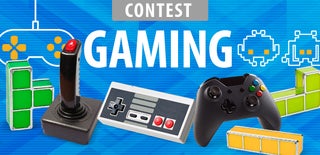Introduction: Raspberry PiSONE Multiple Entertainment Centre
After the success of my first Instructible here's my second one! It's not a million miles away from the arcade machine I built but the arcade machine is only a one player machine and it's only a got small one person screen.
So this build is going to be a retro games console with an entertainment add on, most likely in the form of kodi. There is going to be 2 player support and hdmi connection to a bigger screen, and the twist is its going to be built into a retro console!
Step 1: Gather Your Materials
1. The retro console - for this build its going to be a Psone (but you knew that by the title of the Instructible!!) - £12 from eBay.
2. Raspberry pi zero, power supply and connector kit - £15 approx from the pihut.
3. Two retro snes controllers - £6 from eBay.
4. Usb hub - £4 local computer fair.
5. Micro usb male to female extension - £2 from eBay.
6. Micro sd card - £5 from ebuyer.
7. Sugru - £12.99 for an 8 packet multipack off Amazon.co.uk
Step 2: Prepare the Console & Power Switch
Disassemble the Psone - 6 screws on the bottom and don't forget the hidden one under the sticker!
I threw away the metal plates and cd lens unit, it was faulty anyways!
I wanted to use the original On / Reset switch so I desoldered the push switch off the motherboard and put some test cables on to test continuity. With continuity confirmed I cut a mirco usb extension cable in half and cut back the outer to expose the cables. The ones we are interested in are the black (ground) and the red (5v) cables, the others carry data but as this is a power switch, they can be ignored. So the red and black cables are soldered to the switch so they make when the button is pushed.
I also desoldered the controller ports and memory card ports and hot glued them in position, this was to fill the gaps only, they will not be in use!
Step 3: Position Your Pi
A happy coincidence was that the HDMI and the power connector on the Pi Zero exactly lined up with the power and video ports on the console case so I decided on the position of the Pi Zero with the HDMI convertor up against the case (as shown in the photos) as now i don't need to add a HDMI extension. The ports did need to be extended downwards on the lower half of the case which was easily done with cutters.
Next I hot glued the push switch in the same location as the original switch and secured the solder and cables with more hot glue to minimise the strain on the joints - see photo. With the Pi Zero in place i test fitted the top of the case and found I needed to cut off the front left screw pillar and one rear support pillar to enable the case to be closed. The centre support pillar i cut down to the correct height to support the Pi Zero in place.
Next to position and add the usb hub.
Step 4: Position the USB Hub
The usb hub was a little too big so I removed the case and it fit a lot better. With the position finalised I can now cut the top case to enable it all to fit in and to allow access to the usb hub and the micro sd card. The cutting was done very easily with my rotary cutter.
Last job was to fill the areas around the rear ports with Sugru, (The excess Sugru cleaned off ok with a little warm water) to secure the connectors and to make it look finished. The rest of the Sugru I rolled into lengths and stuck it around the cut area in the top case, to hide the rough edges.
Replace the rear screws and you're done!!
Step 5: Software
I tried a few multi boot systems like TriPi and NOOBS but went with BerryBoot. It was easy to set up and I can add other operating systems as I wish!
I won't go into too much detail about how to do it just check out these websites -
http://www.howtogeek.com/141325/how-to-multi-boot-your-raspberry-pi-with-berryboot/
http://www.berryterminal.com/doku.php/berryboot_a10
So far I have RetroPie and OpenElec with Kodi installed.
For RetroPie help go here - http://blog.petrockblock.com/retropie/
And for OpenElec info see this website - http://openelec.tv/get-openelec
Its all very well documented so I won't type it all out but if you get a problem, get in touch!
Step 6: Play Time!!
Connect the power and hdmi cables, plug the controllers in and enjoy!!

Participated in the
Gaming Contest












